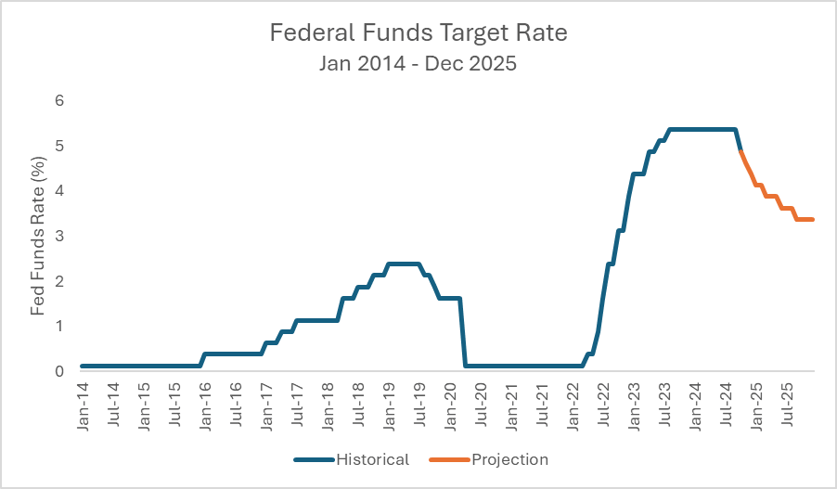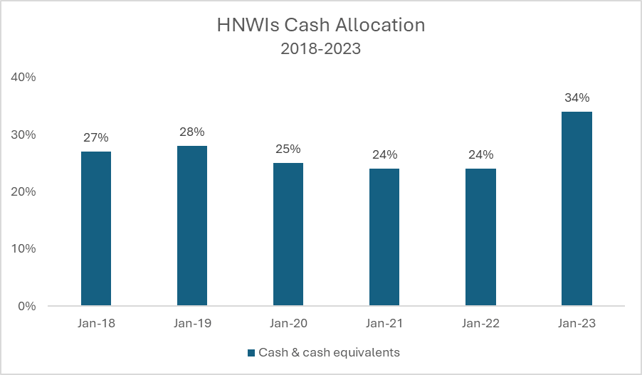
(AssetMark) An outsourced chief investment officer (OCIO) is a third-party provider that manages investment-related responsibilities for the clients of wealth management, investment management, and consulting firms.
OCIOs assume multiple responsibilities related to investment management, particularly by evaluating portfolio managers and providing financial advisors with access to those managers. Their level of involvement in clients’ portfolios is dependent on the financial advisors with which they work. Advisors may choose to fully outsource their clients’ investment functions to an OCIO or delegate a select list of investment-related tasks while still retaining primary responsibilities.
What is an Outsourced Chief Investment Officer?
Although OCIO stands for outsourced chief investment officer, it can also refer to outsourced investment management services more broadly. Registered investment advisors (RIAs) typically partner with an OCIO or other investment management professional to extend specialized investment services to their clients.

An OCIO might handle all of a client’s investment management functions or a select portion of related tasks, including:
- Strategic asset allocation
- Identifying and selecting portfolio managers
- Providing investment advice, guidance and recommendations for clients’ investment portfolios
However, when delegating investment tasks to an OCIO, financial advisors typically need to retain a certain degree of fiduciary responsibility regarding asset allocation. At the same time, other duties are easily transferred to the third-party provider.
Which Organizations Use OCIO Services and Why?
Advisors leverage OCIO services to support a range of objectives related to fiduciary requirements, governance, funding status, risk management, and overall operating expenses. Ideal candidates for OCIO services work with institutions such as endowments or foundations—organizations with a board or governing body in place.
These clients are a natural fit for OCIOs. After all, an OCIO is an outsourced chief investment officer; if a given organization has significant investment decision needs, they might install their own chief investment officer internally or rely on an investment committee rather than outsource. These institutional governing bodies are designed with the role of chief officer in mind. As a financial advisor, you can help these clients find that chief officer in the form of an OCIO.
In this way, OCIOs can relieve advisors of many administrative tasks and provide access to a diverse pool of investment portfolio managers, which they vet externally to streamline discretionary decision-making and implementation.
However, the majority of a financial advisor’s clients aren’t going to be a great fit for an OCIO. Regular clients, high-net-worth clients, and even the ultra-high-net-worth clients may be better off when their financial advisor chooses a different model for outsourcing services.

Advantages of the OCIO Model
Beyond day-to-day investment management tasks, an OCIO benefits advisors through high-value services that enable each advisor to spend more time with their clients.
Here are several key benefits of the OCIO model:
#1. Reduced Expenses
An OCIO can help you reduce staffing and technology expenses without compromising your provided services or the client experience. Rather than developing a fully staffed internal investment practice or hiring niche experts as new client needs arise, your practice can lean on an OCIO to standardize and maintain trustworthy, compliant investment processes.
#2. Operational Efficiency
Just as OCIOs help reduce staffing costs, they can also introduce new efficiencies, freeing you up to spend more time focusing on your clients. The OCIO service model often improves advisors’ portfolio management processes in many ways. Ideally, it will create opportunities to eliminate certain fees, negotiate more competitive ones, and minimize third-party provider costs.
#3. Strong Relationships with Institutional Investors
An OCIO should serve as an extension of your business, which means their primary focus should lie in supporting your clients. OCIOs often create direct relationships with clients, which can be exceptionally beneficial if you work with institutions that prefer 1:1 relationships with the people managing their investments. Furthermore, the right OCIO can also enhance your firm’s offerings through customized investment programs, expanded research, and specialized capabilities unique to the institutional space.
#4. Administrative Support
Running a business and managing client assets simultaneously requires significant front- and back-office work. While advisors are impressive multitaskers, it’s easy for administrative work to take away from time spent on client-focused endeavors. Outsourcing investment-related administration to an OCIO solution reduces the number of tasks you’ll handle internally, although you’ll still be on the hook for the bulk of your practice’s non-investment-related administration. By passing items off to a trusted third party, your team stands to gain valuable time back in their workdays.
Disadvantages of the OCIO Model
While an OCIO offers several potential benefits to advising firms and RIAs, the OCIO model also contains certain limitations and potential risk factors you should be aware of before investing in an outsourced partner.
#1. Scalability Concerns
While an OCIO’s expertise has the potential to fundamentally improve your clients’ portfolios, the specialized nature of their work actually poses scalability concerns over time. If your firm only works with a handful of institutional clients, an OCIO can likely manage them all with ease. However, as your business grows, you’re apt to notice that a single OCIO simply can’t keep up with demand, forcing you to explore another third party to support ongoing operations.
#2. Loss of Control
By handing off essential investment functions to an OCIO, you’re putting the success of your operations in the hands of another entity. If that operator isn’t entirely transparent, takes too many liberties with your client’s assets, or disrupts carefully constructed advisor-client relationships, your business could suffer significantly.
#3. Limited Oversight
An OCIO manages an array of tasks for advisors and their clients. However, the OCIO model is far from all-encompassing, which means you and your clients still need to account for additional oversight if you choose to work with OCIO. For example, while an OCIO may speed up the portfolio manager selection process, they won’t be able to provide other key services like business succession planning, retirement plans, technology curation, business development, and so on.
#4 Role Redundancy
Partnering with an outsourced investment manager could create the perfect opportunity for you to reach institutional clients, but it can also put your business dealings at significant risk. Depending on your clients’ needs, there may be a certain level of redundancy between the OCIO’s services and those of your own operations. In these cases, you may end up losing business if clients prefer to cut out the middleman and engage directly with an OCIO service.
How to Select the Right Investment Management Partner
While the OCIO model has recently grown in popularity amongst financial advisors, it’s not the only option RIAs and advisory firms have to acquire external support for their businesses. For example, you consider one of the following OCIO alternatives:
- A wealth management system
- A traditional investment consultancy
- A turnkey asset management platform (TAMP)
No matter which model you choose, there are several notable capabilities your external investment management partner should offer, including:
Technology Enablement
The right technology can support your internal business operations and enhance your clients’ experience with your firm. Ideally, your investment management partner will be able to provide end-to-end asset management software that explicitly addresses financial advisors’ needs. This could include portfolio creation tools, data visualizations, analytics, and other solutions that make administration and client discussions more fruitful.
Curated Service Models
In the vast market of third-party providers, it’s all too easy to strike the wrong balance between flexibility and rigidness. On one end of the spectrum, you’ll encounter providers with a one-size-fits-all service offering. The flip side consists of providers with a buffet-style list of services that require you to invest heavily in due diligence. Instead, look for a partner that offers a wide array of services and customizes their solutions to fit each advisors’ needs.
Beyond Investment Consulting
The key to a successful advisor-outsourcer relationship lies in both parties’ ability to move past transactional interactions into a strategic business partnership. Your third-party provider should be committed to driving success for your firm and clients by helping you overcome any obstacles within your operations through their services, support resources, and expert guidance every step of the way.
Although an OCIO may provide investment management support, this is a very small slice of your overall business. Only a financial advisor can connect with their clients; almost all other front- and back-office functions in a financial advisory practice can be supported by dedicated professionals.
The right investment management partner will support your portfolio management as well as your business development efforts, your specialized service offerings, the technology stack you use, your due diligence work, and more. Ideally, all of these services can come together to maximize both the quantity and quality of time you spend with your clients.
Outsourced Investment Management With AssetMark
AssetMark is a leading provider of extensive wealth management and technology solutions that help financial advisors meet the ever-changing needs of their clients and businesses.
The AssetMark TAMP combines specialized investment management functionality with next-level support for advisors and their clients. Unlike OCIOs or traditional TAMPs, we go beyond task management to become a trustworthy extension of your practice.
Our teams are always available to provide platform support, ensure your practice is functioning smoothly, customize your solutions, and connect with you to maximize your ability to serve your clients.
Access a Holistic Set of Asset Management Offerings
Build and manage portfolios that align with your clients’ needs and support their long-term financial goals. AssetMark offers a variety of investment solutions designed around your business operations and client expectations. Advisors can choose the features that will be most impactful to their practice—such as your choice of asset classes in DIY or turnkey investment strategies, custom high-net-worth solutions, or curated retirement services—all thoroughly researched and monitored by our team of due diligence professionals.
Build Trusted Business Partnerships
Grow your practice with a partner that cares about your clients just as much as you do. Where OCIOs serve clients directly, AssetMark empowers the advisor to be the principal figure in their clients’ eyes. We take care of the front- and back-office work that cuts down on time, provide market insights and professional development services, and improve business processes so you have the greatest amount of time possible to spend on your clients.
Improve Efficiency and Streamline Operations
Leverage AssetMark’s wealth management tools and team of experienced professionals to reduce your administrative workload and deliver high-value services to your clients. Rather than providing you with a one-off solution, we’ll help you evolve your practice by identifying gaps and responding promptly to challenges. AssetMark brings time and resources back into your business so you focus on helping your clients achieve their financial goals.
Deliver Exceptional Client Experiences
Your clients are the heart of your business, which means every solution you invest in should tie back to their financial goals. AssetMark’s end-to-end asset management software includes everything you need to deliver a seamless digital experience. From portfolio construction and investment research to client communication and prospecting, our technology empowers advisors to transform their practice and avoid the time lost managing multiple software tools.
Scale Your Practice
Our solution does more than streamline your day-to-day activities. Leverage our expertise and curated services to expand your client base, guide staff development, and grow your business. Beyond expert recommendations and solutioning, AssetMark offers dedicated technical support and expert guidance on implementation and maintenance to ensure that the technology you adopt actually makes a difference for you and your clients.
Deciding on an Outsourcing Model
Although OCIO providers can be a good fit for advisors with many institutional advisors, they can often get in the way of the financial advisor-client relationship, provide a very narrow band of support to the advisor, and struggle to grow with you as you scale.
With AssetMark’s TAMP, however, you can gain all the benefits of an outsourced CIO, while ensuring that they stay front-and-center when it comes to your clients’ financial services needs.
Not only do we offer a curated investment management platform, but we also offer our technological expertise, business consulting professionals, and a holistic wealth management support service that enables financial advisors to be the best guide to their clients possible.
Interested in learning more about AssetMark’s end-to-end wealth management solutions? Request a consultation today to start the conversation.



